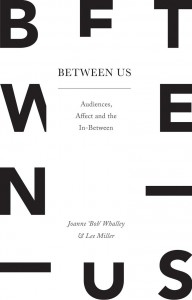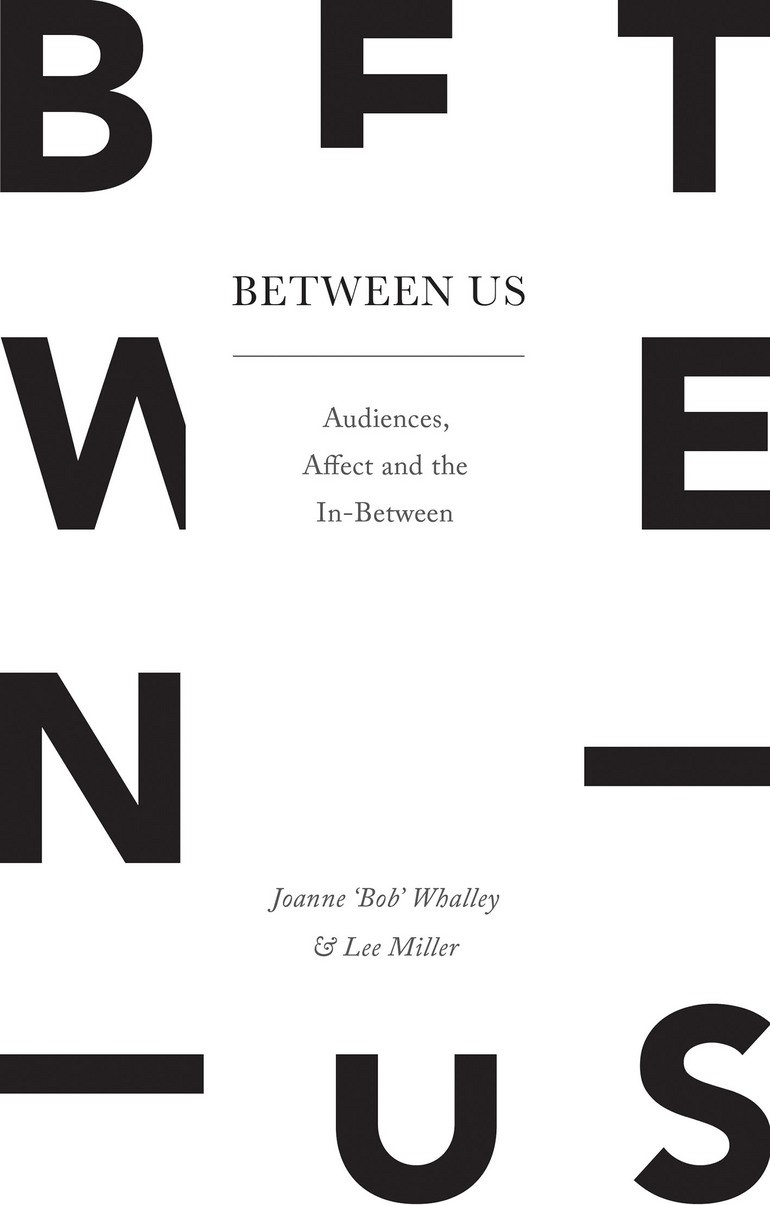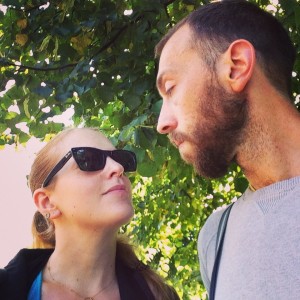BY LEE MILLER AND JOANNE ‘BOB’ WHALLEY
How do you write about writing in a way that is engaging, resists becoming a self-regarding meta-commentary, and makes people want to read your other work without looking like an advert? It’s quite a tall-order, but that’s what we hope to do over the next few paragraphs. In early December 2016, our book Between Us: Audiences, Affect and the In-Between was published by Palgrave MacMillan.
 But perhaps we are getting ahead of ourselves. Let’s start with introductions. Hello. We are Joanne ‘Bob’ Whalley and Lee Miller. We are two theatre academics. In 2004, we completed the first joint practice-as-research PhD to be undertaken within a UK arts discipline. Since then, much of our research has been concerned with the process of creative collaboration, and we have found ourselves thinking a lot about how knowledge is generated in the space in between two people.
But perhaps we are getting ahead of ourselves. Let’s start with introductions. Hello. We are Joanne ‘Bob’ Whalley and Lee Miller. We are two theatre academics. In 2004, we completed the first joint practice-as-research PhD to be undertaken within a UK arts discipline. Since then, much of our research has been concerned with the process of creative collaboration, and we have found ourselves thinking a lot about how knowledge is generated in the space in between two people.
We’ve also been married since 1996, although that might not be important. In some ways, we are the ‘Us’ in the title of the book. Except, of course, its not quite that simple – it rarely is. The ‘Us’ in the title also refers to the broader acts of sharing that can happen in theatre, and the book thinks about what is happening in that shared space between the performer and the audience.
Between Us grows out of another type of sharing; the sharing that happens between academics. In November 2013, we gave a paper entitled “Ms Forbes and the Grey Man: Alchemy and Affect in Performance”. It started with the following quote from Herbert Blau:
‘In theater, as in love, the subject is disappearance.’
This paper was delivered to the Performance. Experience. Presence (PEP) research group at Plymouth University, and it discussed our experience of watching a small girl walk uncertainly through the white walled rooms of a gallery. It was a paper about the emotional resonance the piece had, and it led us to a consideration of the affective exchanges possible when watching live performance. After the paper was finished, we tentatively suggested to the room that we thought the paper might grow into an article. Roberta Mock said we were wrong, and she left the pause just long enough to worry us before saying “It should be a book”.
Returning to the paper, and thinking about how we might grow 4,000 words to about 80,000, we realised that we would need to think carefully about what we might want to focus our research on. Thinking through the ideas in the paper we presented to our friends and colleagues in the P.E.P seminar, we came to the realisation that we wanted to write something for audiences. Not about audiences (although, sure, let’s write about them too), but for them. We wanted to offer something that might speak to anyone who watches, but also offer something that might also be useful to those who are watched, and perhaps try to think about the spaces in between.
As we thought about our experience of watching that small girl walk through tall, white rooms of the art gallery (the piece was Ann Lee by Tino Sehgal), we came to realise that our book should explore the idea that contemporary performance is a shared, transformative experience, one in which the space between the performer and audience is collapsing.
In part, writing the book has grown out of our experience as practitioner-researchers, which is to say that much of our academic career has drawn on our tendency to understand things through action. This approach has informed our research, our performance making, our spectating, and our teaching practices. We wanted to find some way to honour all of these approaches, in order that we might create something that would be useful and engaging. We very much hope that we have found a way to bring together all of these concerns, and allow multiple ways in for a variety of readers interested in looking at live performance, and thinking about the issues that might arise from that looking. We both trained (a long time ago for sure) as actors, a background that places a great deal of value upon bodily experience.
As we moved from acting, and onto the wilder shores of performance and research, we kept hold of the belief that knowledge can be an action, and that these actions might insinuate their inklings into bodies through thinking and doing. So, our book invites the reader to engage. At the end of each section we offer a series of performance tasks, each intended to encourage thinking about audiences, qualia, intimacy, proxemics, and affect, and to hopefully move these musings into a more playful space.
Ultimately, we were driven to write this book because the exchange between audience and performer remains an under-explored area, and we hoped that by opening up a playful exchange with the reader, we might provide a text that widens the debate, while still being an accessible entry into the philosophy of spectatorship.
Task:
Stand in a fresh place.
Stand where no-one has stood before (snow fall can help with this task).
Dr Lee Miller and Dr Joanne ‘Bob’ Whalley teach Theatre & Performance at Plymouth University. Their current research includes an exploration of Buddhist, Vedantic and Taoist philosophies, with particular attention being paid to the concept of witnessing. Having spent too many years inside their heads, they have noticed they have bodies, and as a consequence Bob is now an acupuncturist, and Lee teaches yoga. They have published extensively on practice-as-research, and they have recently completed Between Us: Audiences, Affect and the In-Between for Palgrave Macmillan.


